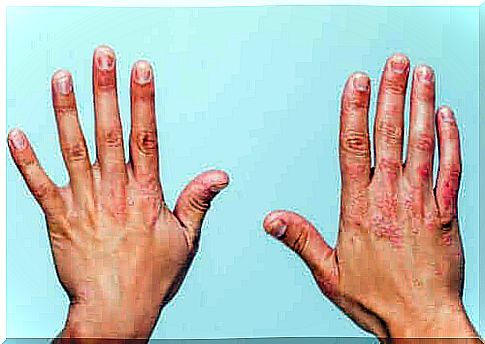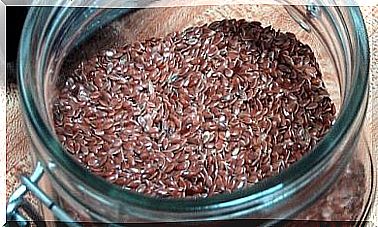Auto-inflammatory Diseases: What Is It?

Autoinflammatory diseases, also known as periodic syndromes, are characterized by periodic states of systemic inflammation. These involve the digestive system, the nervous system or the skin. They can also affect soft tissues, such as joints.
Very often, autoinflammatory diseases cause episodes of fever or rheumatic manifestations. In addition to this, they are often mistaken for autoimmune, infectious or neoplastic diseases. These changes are hereditary and are uncommon.
An abnormal activation of the innate immune system occurs in auto-inflammatory diseases. Unlike autoimmune diseases, these are not associated with a T cell response, nor are they characterized by high antibody production. Let’s find out more in this space.
Periodic fever hereditary anti-inflammatory diseases
Hereditary periodic fever syndromes are the most common manifestation of autoinflammatory diseases. Among these, the most observable pathology is familial Mediterranean fever, characterized by frequent and short-lasting episodes of fever, as well as by serositis (or inflammation of the serous tissues of the body, such as pleura, pericardium and peritoneum).
In addition to familial Mediterranean fever, there are other syndromes that are part of this group. These are the following:
- TNF receptor-associated periodic syndrome (TRAPS). It manifests itself with acute inflammatory episodes, with very high fever, muscle aches, rash on the torso and limbs, as well as with abdominal pain.
- Hyper-igD syndrome and periodic fever. It usually starts in the first two years of life and is characterized, for example, by high fever, inflammation of the lymph nodes in the neck, joint, muscle and abdominal pain.
Cryopyrinopathies, a type of anti-inflammatory disease
It is a group of uncommon autoinflammatory diseases caused by the mutation of the NLRP3 gene. It includes three pathologies:
- Familial cold autoinflammatory syndrome (FCAS): appears in the first months of life and manifests itself with fever, hives, fatigue, headache, muscle and joint pain and conjunctivitis. It is unleashed due to exposure to the cold.
- Muckle-Wells Syndrome (MWS): Symptoms are similar to those of FCAS, but episodes last longer and are more common. These include: deafness, episcleritis (eye disease) and increased risk of amyloidosis, or abnormal accumulation of amyloid in organs or tissues.
- Chronic neurological, infantile and joint syndrome / NOMID Neonatal Onset Systemic Inflammatory Disease (CINCA): that is, the most severe form of these syndromes. In addition to the symptoms of MSW, it causes meningitis, blindness, brain atrophy and deformation of the bones.
Pediatric granulomatous arthritis
This disease is a subgroup of autoinflammatory diseases that respond to a mutation in the NOD2 gene. Known by various names, the most common are Blau syndrome or early-onset sarcoidosis. The only difference between the two is that in the first there are precedents in the family, in the second there is no.
The main feature of this pathology is the presence of a permanent inflammatory state. It usually appears before the age of 4 and is most often accompanied by arthritis, skin lesions, uveitis and fever (in half of the cases).
Auto-inflammatory diseases with pustular skin rash and episodes of fever

This subgroup includes several types, which are as follows:
- With inflammatory bone disease. It is a serious disease, which appears in the first weeks of life and which presents severe symptoms, similar to those of a neonatal sepsis.
- Majeed syndrome. It appears in the neonatal period and has symptoms such as multifocal osteomyelitis, pustular dermatitis, etc. Usually, it is very rare.
- With pyogenic arthritis. Also known as PAPA syndrome, it is characterized by arthritis and, in most cases, by gangrenous pyoderma or severe cystic acne. It appears before the age of 10.
- With inflammatory bowel disease. It appears before the first birthday and is characterized by intestinal disorders, such as abdominal pain, bloody diarrhea, etc.
- With other manifestations. This type includes DITRA, which affects children under 11 years of age and is characterized by the appearance of skin lesions. CAMPS is also part of it, which manifests itself with psoriasis.
Syndromes with atypical neutrophilic dermatosis with like lymphocyte infiltrate
This subgroup includes three syndromes:
- PRAAS (Proteasome-related autoinflammatory syndromes). The main features are skin changes and lipodystrophy – with partial or total absence of adipose tissue, or body fat.
- CANDLE syndrome: occurs with recurrent fever, almost every day, accompanied by skin lesions and developmental delay.
- Nakajo-Nishimura syndrome, with high fever and periodic skin rashes. Over time, lipomuscular atrophy in the upper body also appears.
Syndromes with autoinflammation and immunodeficiency
This subgroup also includes three clinical manifestations:
- PLAID syndrome, with skin urticaria, erythema and itching in response to cold and further immune system disorders.
- APLAID, with frequent appearance of skin blisters and problems with the joints, eyes, intestinal tract and respiratory system.
- HOIL syndrome. In this case, there is a state of chronic self-inflammation, as well as invasive infection and muscle problems.
As we have seen, although there are many points in common between the main autoinflammatory diseases, each of them is able to present a series of unique characteristics. Precisely for this reason, the therapeutic approach is not always the same.









